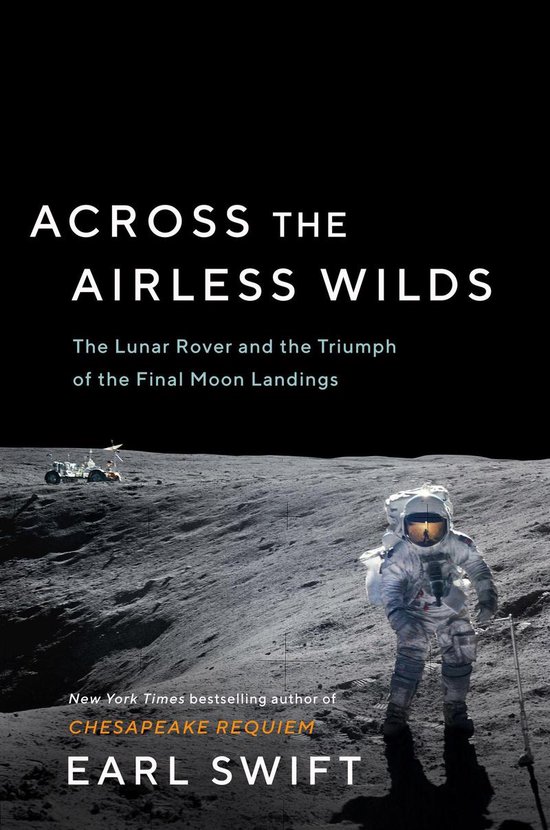Across the airless wilds

Direct beschikbaar
New York Times–bestselling Author: This history of NASA’s lunar roving vehicle, including color photos, is “a joy to read from beginning to end” (The Wall Street Journal, Ten Best Books of the Month).
8:36 P.M. EST, December 12, 1972: Apollo 17 astronauts Gene Cernan and Jack Schmitt braked to a stop alongside Nansen Crater, keenly aware that they were far, far from home. They had flown nearly a quarter-million miles to the man in the moon’s left eye, landed at its edge, and then driven five miles in to this desolate, boulder-strewn landscape. As they gathered samples, they strode at the outermost edge of mankind’s travels. This place, this moment, marked the extreme of exploration for a species born to wander.
A few feet away sat the machine that made the achievement possible: an electric go-cart that folded like a business letter, weighed less than eighty pounds in the moon’s reduced gravity, and muscled its way up mountains, around craters, and over undulating plains on America’s last three ventures to the lunar surface.
In the decades since, the exploits of the astronauts on those final expeditions have dimmed in the shadow cast by the first moon landing. But Apollo 11 was only a prelude to what came later: While Neil Armstrong and Buzz Aldrin trod a sliver of flat lunar desert smaller than a football field, Apollos 15, 16, and 17 each commanded a mountainous area the size of Manhattan. All told, their crews traveled fifty-six miles, and brought deep science and a far more swashbuckling style of exploration to the moon. And they triumphed for one very American reason: they drove.
This fast-moving history of the rover and the adventures it ignited puts the reader alongside the men who dreamed of driving on the moon and designed and built the vehicle, troubleshot its flaws, and drove it on the lunar surface. Finally turning a spotlight on these overlooked characters and their missions, Across the Airless Wilds is a celebration of human genius, perseverance, and daring.
“Such an enjoyable book . . . [A] thrilling account.” —The Times (London)
“Awe-inspiring . . . a brilliantly observed homage to the human spirit.” —Newsweek
“A fabulous summer read. The entire second half of [the] book is a riveting travelogue of six astronauts’ ‘lunar road trips’ drawn from interviews and radio transcripts, augmented by priceless color photos that alone are worth the price of the book.” —Virginian-Pilot
- 1 Bekijk alle specificaties


Prijs:

Taal: en
Bindwijze: E-book
Oorspronkelijke releasedatum: 06 juli 2021
Ebook Formaat: Adobe ePub
Illustraties: Met illustraties
Hoofdauteur: Earl Swift
Hoofduitgeverij: Custom House
Personage: Marvel
Lees dit ebook op: Desktop (Mac en Windows)
Lees dit ebook op: Kobo e-reader
Lees dit ebook op: Android (smartphone en tablet)
Lees dit ebook op: iOS (smartphone en tablet)
Lees dit ebook op: Windows (smartphone en tablet)
Studieboek: Nee
EAN: 9780062986559